MATTERS OF OBSESSION
Must-watch: Lemohang Jeremiah Mosese’s third film is a triumph of the spirit
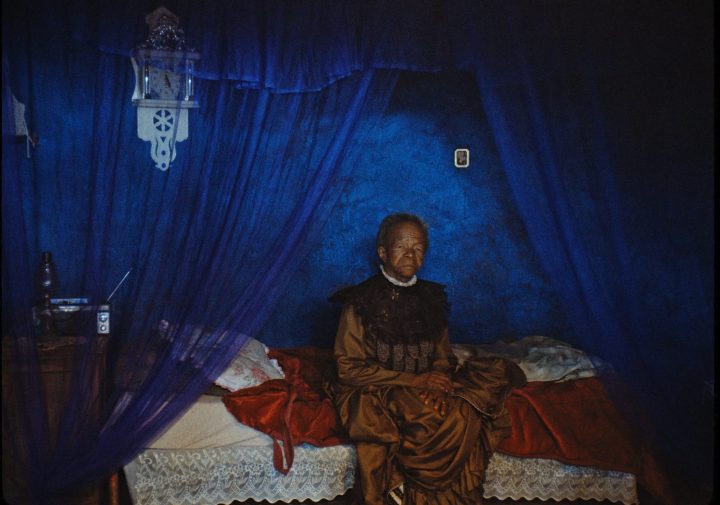
Birthed in a country that has no cinemas, ‘This Is Not a Burial, It’s a Resurrection’, is a triumph of sublime, original filmmaking and an uncompromising art house masterpiece made for the African gaze says Maverick Life contributor, Keith Bain.
An atmosphere of intense disquiet percolates through almost every frame of This is Not a Burial, It’s a Resurrection, the edgy Sesotho feature by Lesotho-born, Berlin-based filmmaker Lemohang Jeremiah Mosese. This fierce tension and accompanying sense of unease that Mosese captures with often rhapsodic beauty, exists in spite of the long periods of meditative stillness, states of inertia and pause that beset the film.
It is as though we are gazing at sacred paintings, studying portraits for clues to something prophetic and otherworldly. In the process, I suspect, we are being seduced by the film’s drugged-out rhythm, coaxed into a sense of that in-between state, somewhere between this physical realm and an ethereal alternative.
Or perhaps, like the stoic 80-year-old protagonist who occupies most of these frequently immobile frames, we are waiting for inspiration, a glimmer of hope, or perhaps a sign from the ancestors, some moment when heaven and Earth might align so that light will vanquish the darkness.
Whatever the narrative’s operating mechanism, it is visceral, soul-stirring stuff, situated in a transcendental space that skims both real and spiritual realms, producing a kind of avant-garde, mystical storytelling. And while it dabbles in Modernist techniques, it does so in order to launch a despairing critique of modernity’s injustices.
Filmed using Academy-ratio framing to produce a box-like view of its world, it resolutely ignores the Hollywood compulsion of driving narrative forward at breakneck speed. Instead, the camera lingers, stares, absorbs – and produces a dreamy, dreamlike atmosphere. In moments it hints at a slippage between worlds, potentially connecting the physical reality of the Earth which is so contested in this story with an afterlife steeped in unknowns.
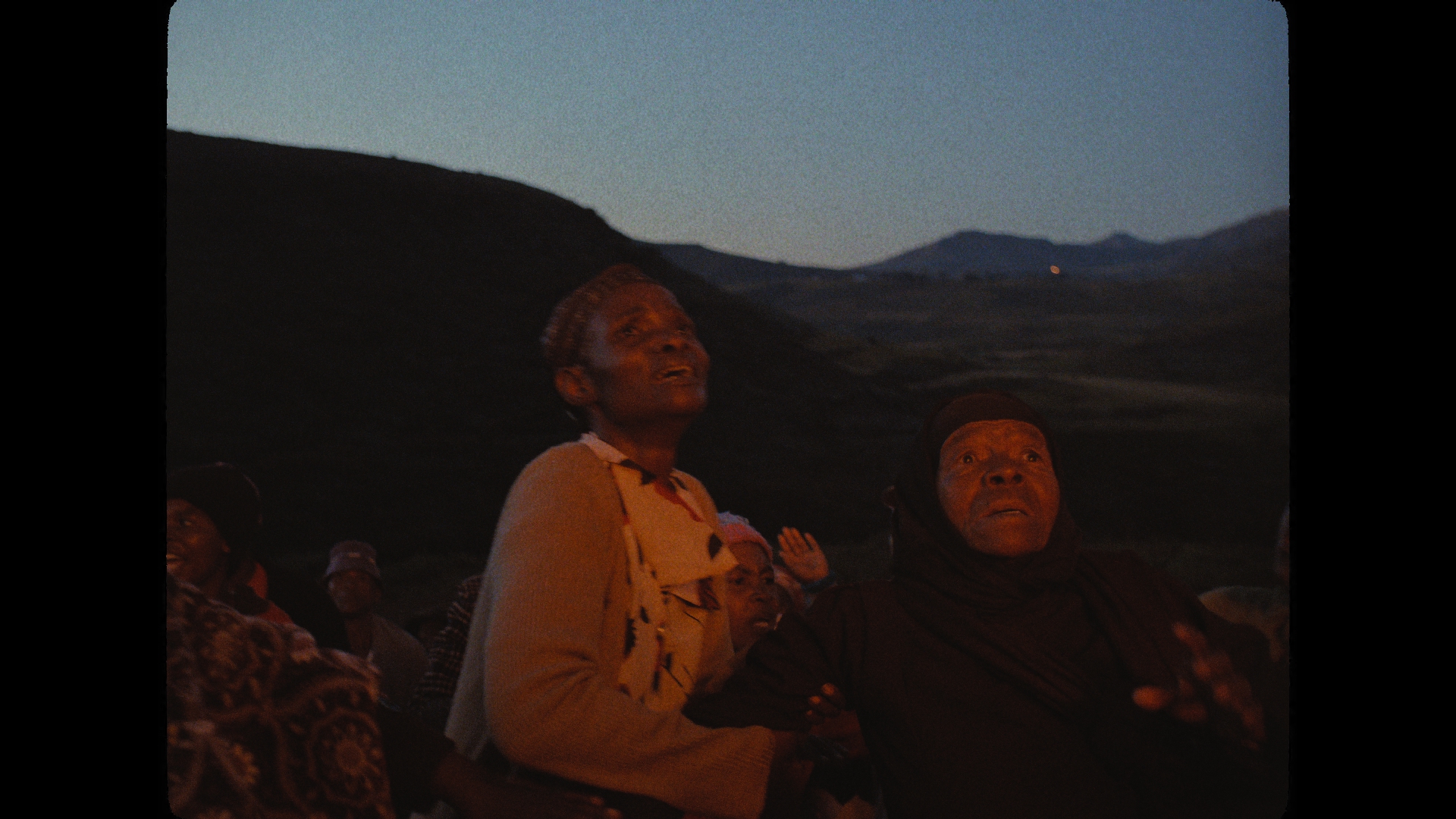
Image: Still from This Is Not a Burial, It’s a Resurrection (Courtesy of Urucu)
The camera lures us in. It pans a vast mountainous terrain, dawdles across flower-dappled plains and valleys, savours the infinite blue of the vast sky above. And when it heads indoors, it captures walls saturated by rich oxide blues or lingers on the wet, earthy browns of mud and dung used to plaster a floor.
Ultimately, though, it settles on the facial landscape of its steely protagonist, Mantoa, a Mosotho matriarch played with a kind of sacred intensity by Mary Twala Mhlongo, who passed away last year, too soon to witness the impact her soul-scorching presence in this film would ultimately have.
In some ways, hers is a familiar story. The tale of one woman, a lone crusader who rises up against injustice, against a system intent on squashing the weak and helpless in some oblivious rush towards capital expansion. It is Erin Brockovich, it is Silkwood, it is Three Billboards Outside Ebbing, Missouri. In other words, a film about an underdog pitted against the might of some large and powerful entity.
And yet it is in every respect utterly original.
At the start of the film Mantoa receives word of the death of her mineworker son, and so, having lost everyone who means anything to her, she prepares for the afterlife. She gives herself over to death, asks the gravedigger to prepare her grave, readies herself to join the ancestors. Early on, in fact, she puts on her best dress, a gift from her late husband, and lies down on her bed in hopes of never waking up.
But she does wake up, and reluctantly faces the day. She opens the door of her hut, and while initially cannot bear to head outside, is ultimately drawn back into the world. She ventures out and heads for the village graveyard where she finds it strewn with trash, plastic bags littering a sacred place in a symbolic nod towards the assault on her rural way of life that is posed by the modern world.
Her appeal to the chieftain to sort out the garbage problem instead turns her attention to the real crisis facing her village: “Progress” is coming, and soon.
“Advancement”, the politician with the loudspeaker calls it, touting the idea that by being forced to uproot their lives and resettle in the city, these simple farming folk will be rewarded with opportunities that can only come by embracing the future.
And so at a kind of informal political rally where the villagers are being bamboozled into accepting the fate their government has decided for them, Mantoa first learns of the plan to construct a dam that will flood the village, eradicating it and the graveyard where her ancestors are buried. In the name of “progress” the village will cease to exist – and if the villagers want their ancestors, they’ll simply be exhumed.
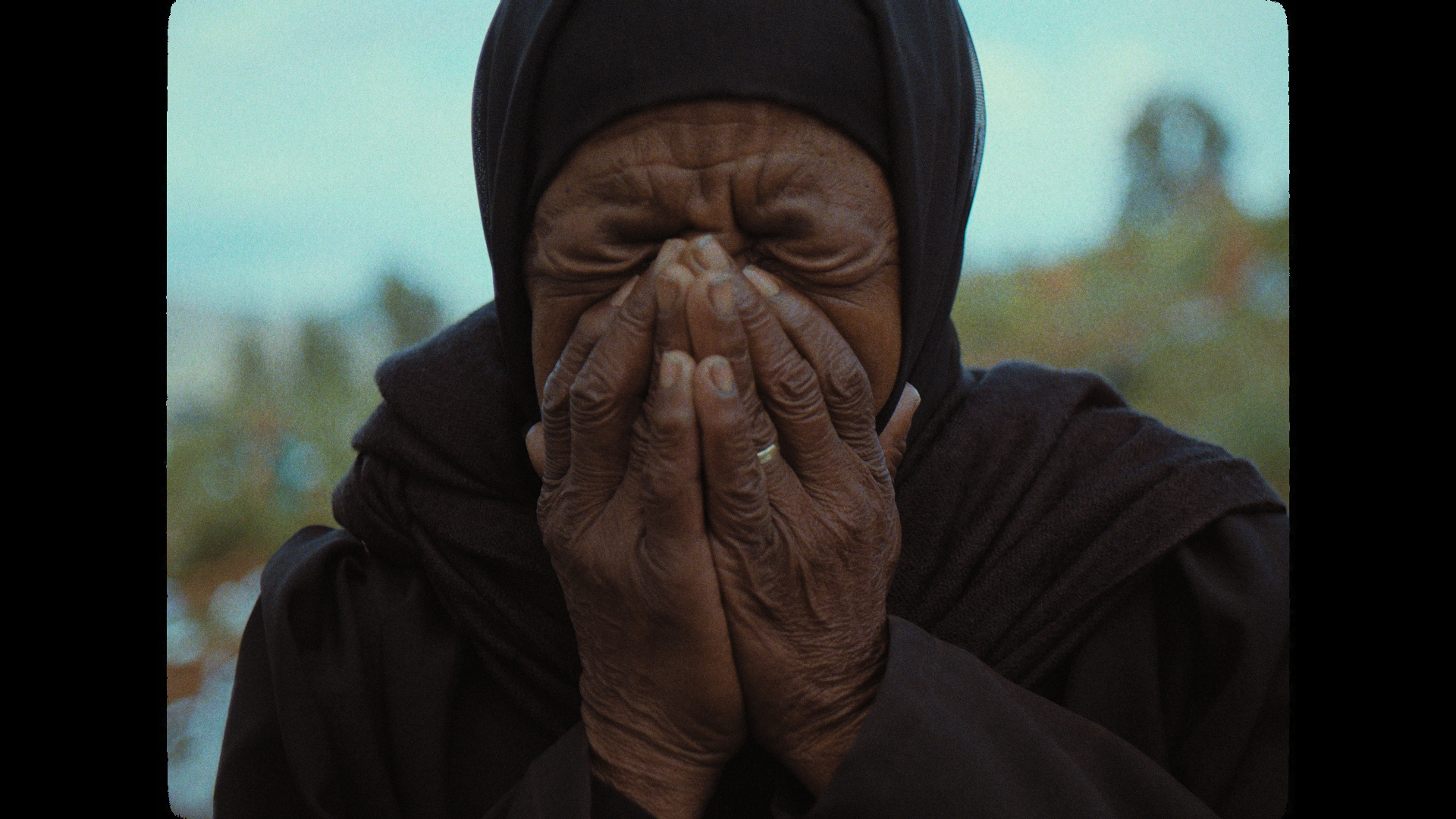
Image: Still from This Is Not a Burial, It’s a Resurrection (Courtesy of Urucu)
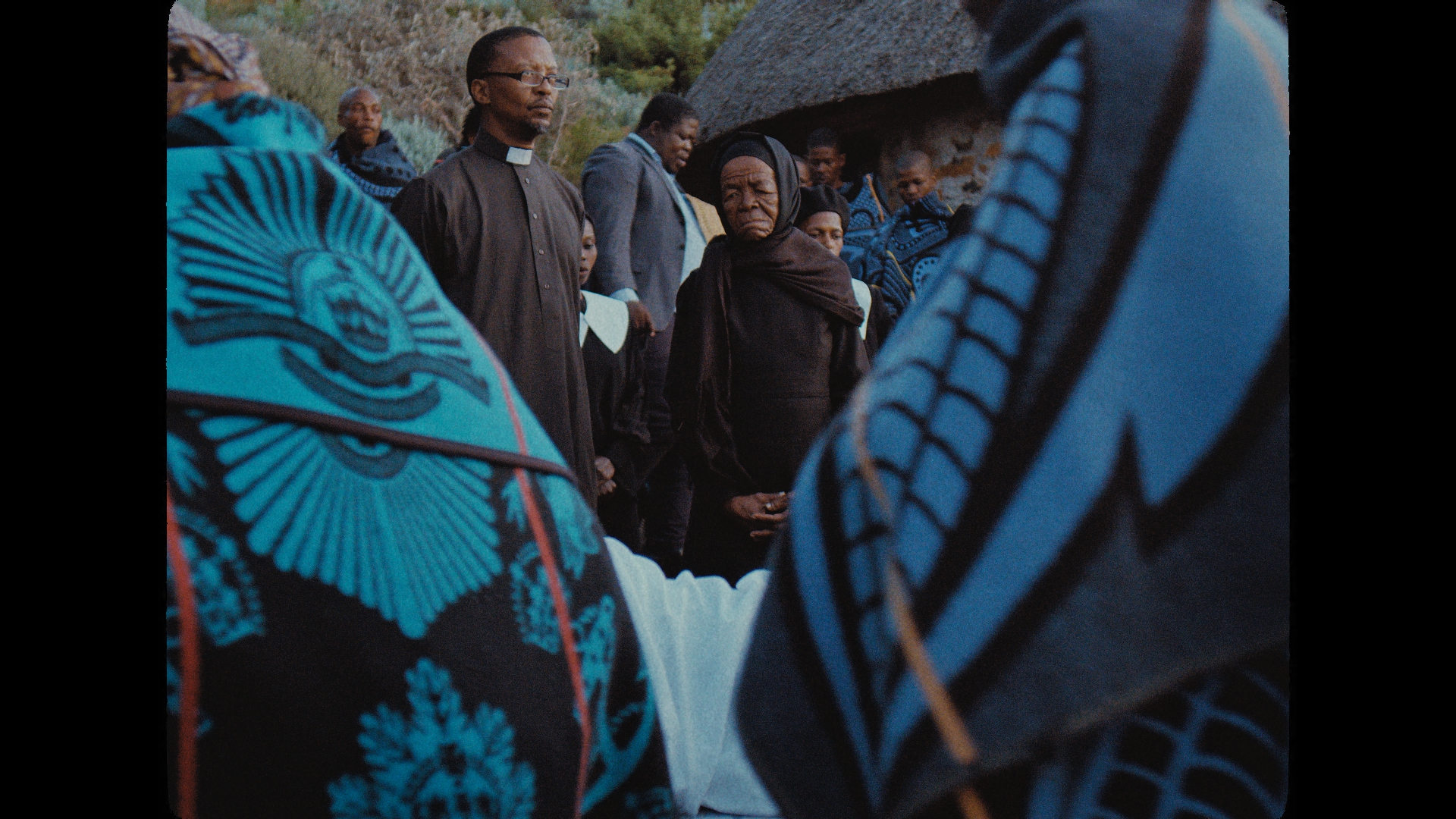
Image: Still from This Is Not a Burial, It’s a Resurrection (Courtesy of Urucu)
The look of incredulity across Mantoa’s face as she witnesses this rally and hears the politician’s slogans being chanted by her fellow villagers says everything we need to know about her dismay, her anger, her refusal to be swept along by some phony political rhetoric.
She will not go without a fight, and instead boards a bus and presents herself at the nearest government department determined to lodge her objections to the planned eradication of her home. Instead of someone to talk to, she’s faced with a hapless civil servant who lists the hoops she needs to jump through in order to make her case.
Powerless in the face of modernity’s bureaucratic brick wall, she returns home. Against a backdrop of men in overalls measuring the land, felling trees and busying themselves with preparations for the swift disposal of the village, the frustrated and furious Mantoa raises her voice in song and protest against the government’s callous plan, effectively rallying her fellow villagers.
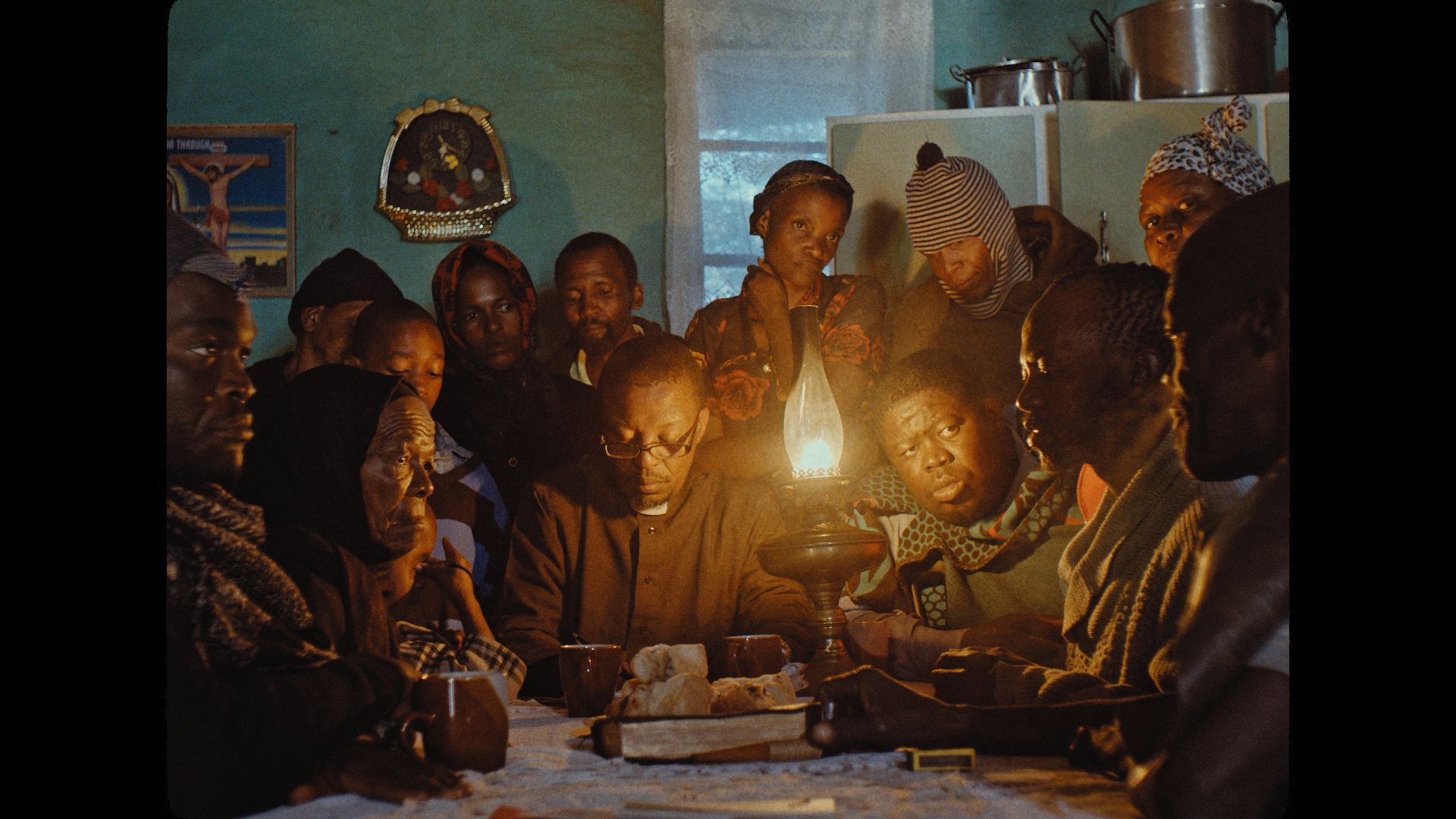
Image: Still from This Is Not a Burial, It’s a Resurrection (Courtesy of Urucu)
With nothing to lose, she is fearless, driven by justifiable indignation. In separate incidents, she admonishes both the priest and the village chief for their lack of action, their failure to respect the ancestors and the sanctity of their land.
She has no more patience for the new gods brought by European missionaries, she tells the priest. She wants justice for the old gods. She will be buried in the land of her ancestors, she insists, using not only her voice but her entire body to carve out a place for herself among cinema’s gutsiest heroines.
Twala barely smiles for a single moment in this film – there is no charm offensive, no putting on a performance or seduction to win the viewer’s empathy. As much as the film itself is doggedly unsentimental, it never deigns to pull that Hollywood trick of endearing us to its heroine. Instead, we are won over by her solemn anger, her despair and disquiet, her inner force, and by the pain that is marked by her downturned expression. Her face works like a cipher, its chiselled landscape filled with knowing wisdom.
For viewers raised on a Hollywood diet, it is not necessarily an easy movie to watch. Particularly if you’ve been weaned on blockbuster staples with their combo-meal packaging of action and drama and spectacle. This is a hard film told with a kind of poetry that sets it apart from Western cinema’s familiar beats and narrative arcs, without its easy-to-fathom symbolism and emotions deployed with calculated force.
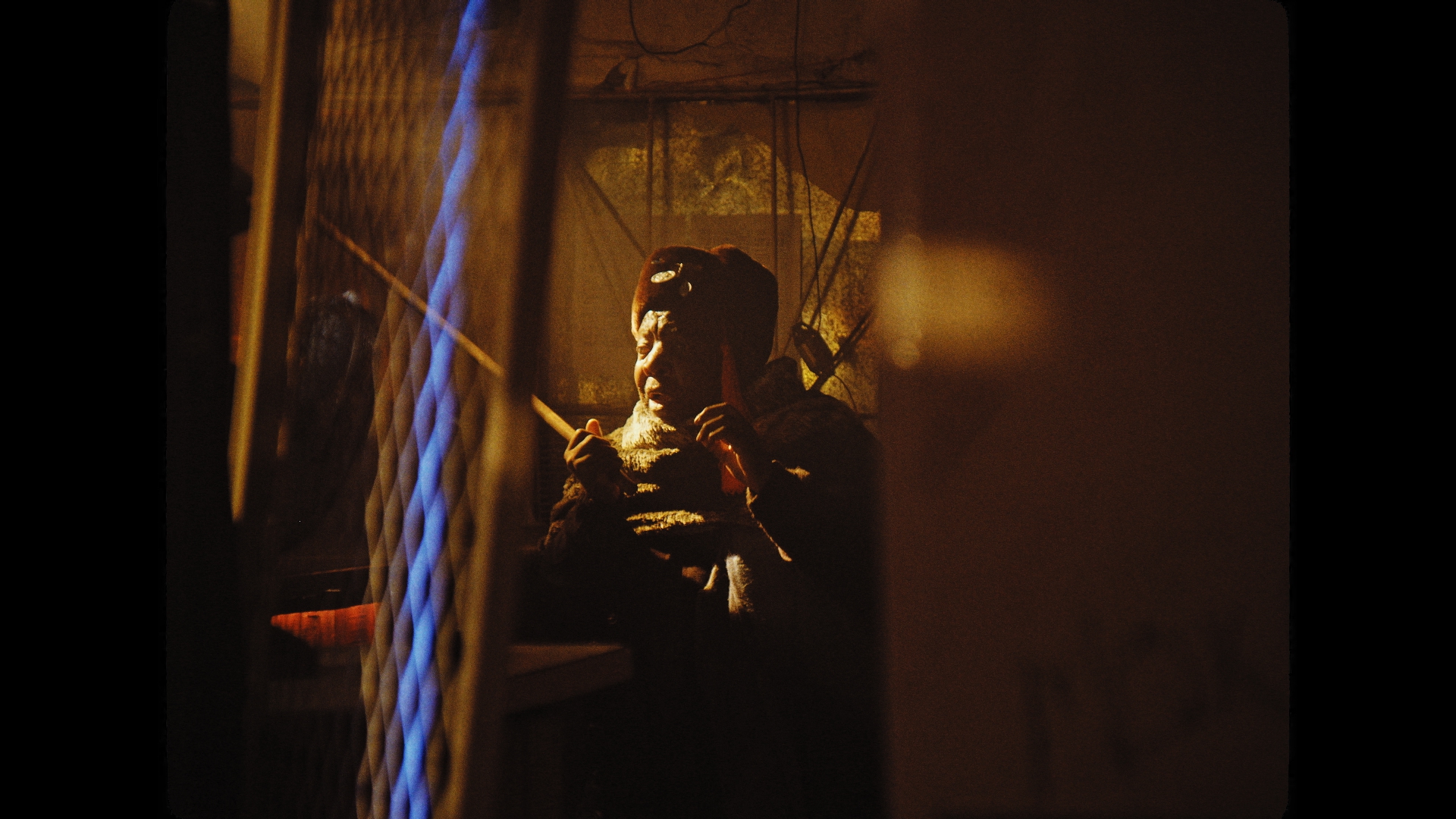
Image: Still from This Is Not a Burial, It’s a Resurrection (Courtesy of Urucu)
And while Mosese’s cinematic building blocks will feel unfamiliar, their powers are manifold. There’s Pierre de Villiers’ striking photography that tethers a melancholic surrealism to the film’s grittier, more corporeal elements.
There’s the haunting score by electronic noise composer Yu Miyashita that jabs at us and scratches the edges of our nerves. This discordant soundscape is combined with hymns sung by a small onscreen chorus, and interspersed with unfamiliar chords emanating from a lesiba (Lesotho’s traditional mouth-blown string instrument) that’s played by the film’s occasional narrator who weaves the story into a kind of elegiac fable from somewhere in a dark corner of a poky urban shebeen.
And there’s the potent channelling of dense symbolism, radiant metaphors and defiant portraits in a series of carefully composed tableaus. Thanks to some deft editing and a script that skips a few beats and refuses to conform, it’s as if the veil between this realm and the next is occasionally lifted, as though temporal reality is fragmented, the glitches in time hinting at the pull from another world.
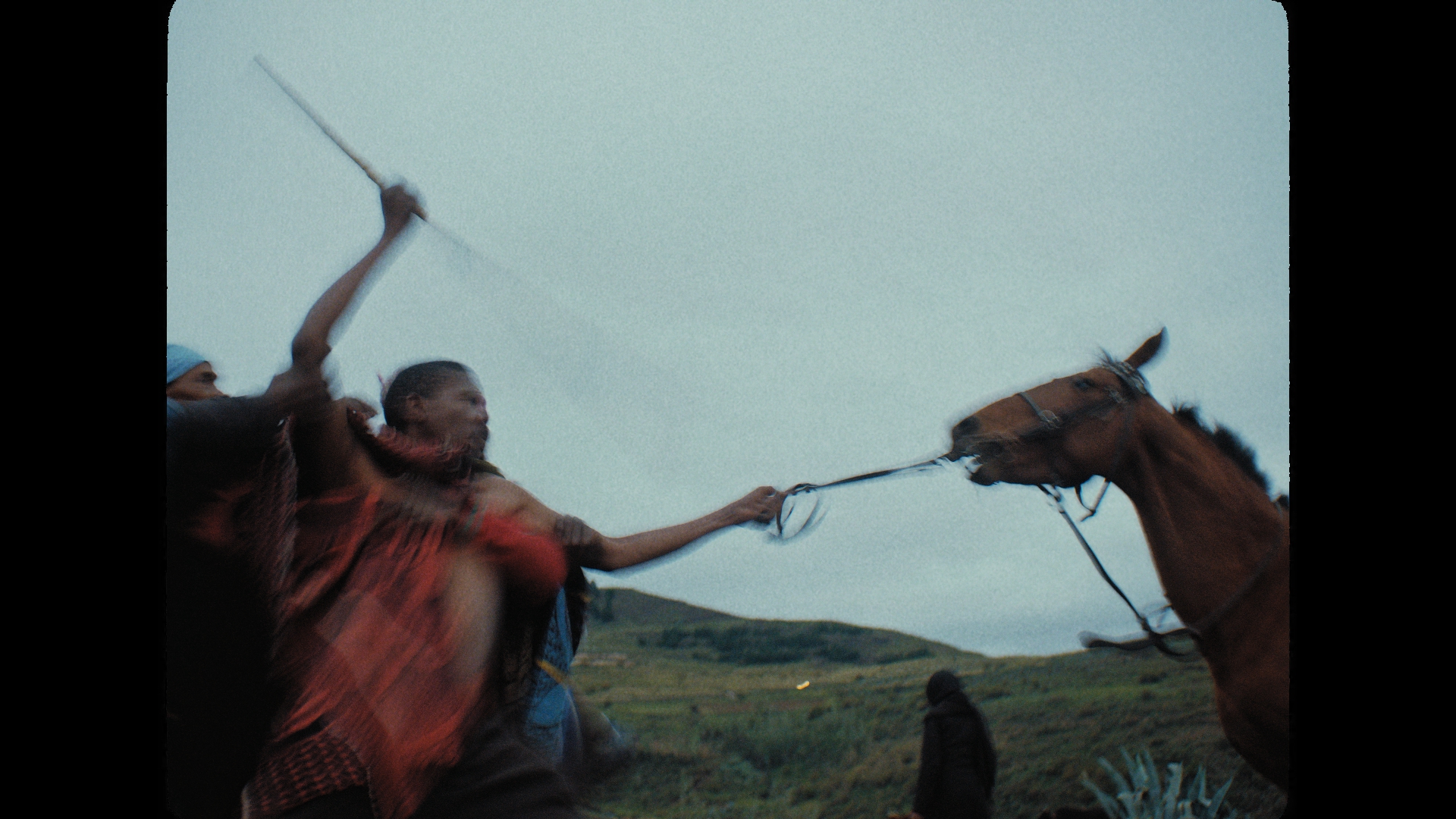
Image: Still from This Is Not a Burial, It’s a Resurrection (Courtesy of Urucu)
Mosese’s movie is not one you watch for solace, but rather to connect with some deeper force, and to meditate on issues of spiritual and ecological import, to experience a kind of ecclesiastic reverence for the Earth. Some of it will jar and perplex. In fact, there are moments when the long, slow staring contest between Mantoa and the camera, or the camera looking at her as she contemplates some off-screen space, are more reminiscent of paintings, a multiplicity of ideas frozen in time.
Mosese says his intention has been to find a way of making films in an utterly personal way, built on the cultural, aesthetic and social context of the people for whom the film is made: His own people, African audiences.
There was some unlearning to be done first, though, he says.
Mosese grew up in a village where seeing a movie was a weekly event that happened in an abandoned, run-down town hall. “I would be waiting on Wednesdays when they put up the poster advertising that week’s coming attractions. They’d clean up that hall on Sunday and then a makeshift cinema would come alive and they’d project 16mm films. Early on, I knew I wanted to make films because of the feeling I got from those movies – a very lucid feeling of awe and surrender. I remember Platoon – Willem Dafoe dying, looking up at the sky – and that feeling was, for me, everything. That’s how I started with cinema, and that feeling was something I’ve always wanted to recapture in my work.”
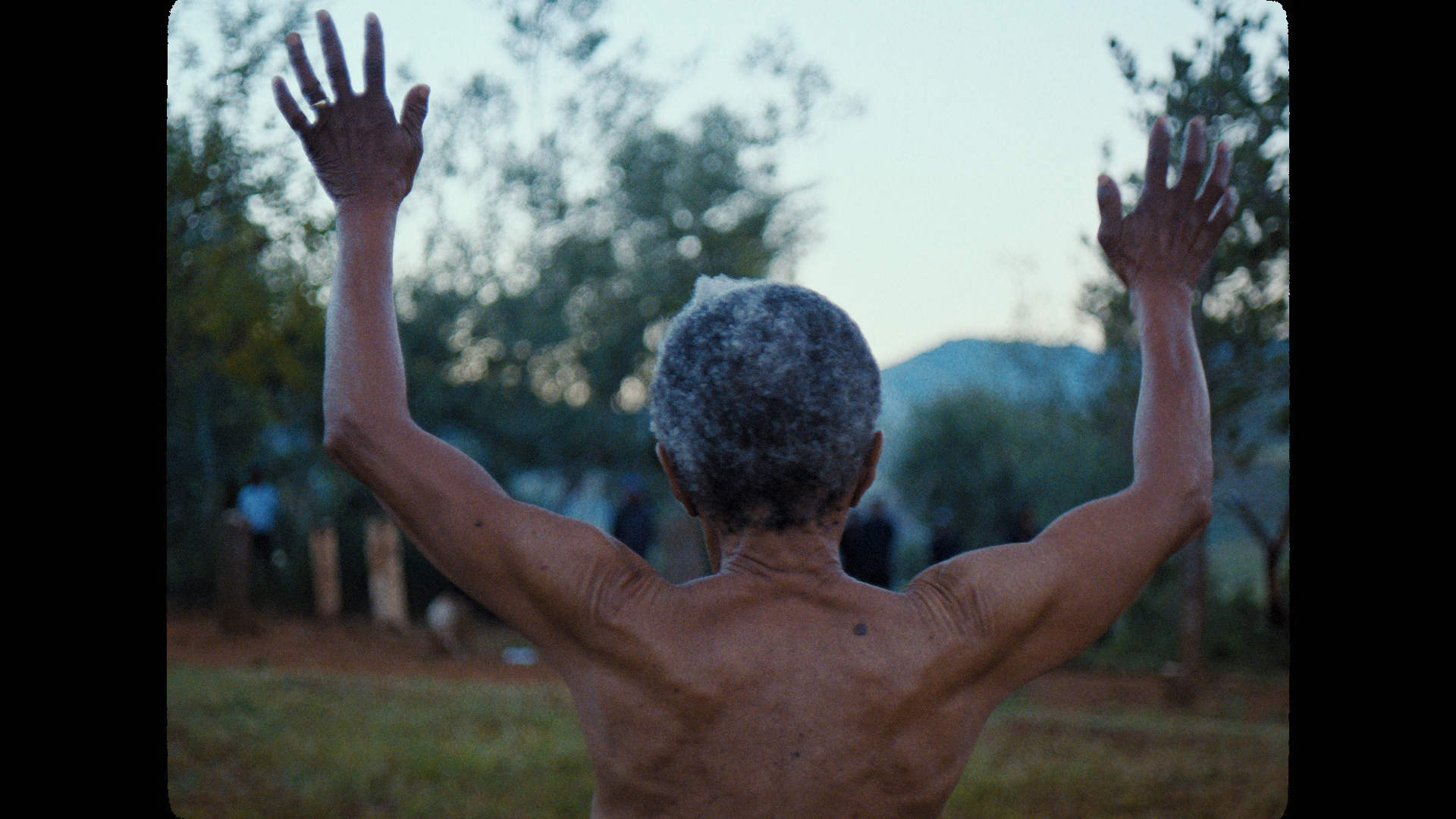
Image: Still from This Is Not a Burial, It’s a Resurrection (Courtesy of Urucu)
Although raised on a diet of conventional films, Mosese’s vision has involved purposefully setting himself adrift from the Western cinematic gaze. “If you watch a lot of American cinema, you end up borrowing that gaze,” he says. “You end up borrowing that mother tongue, not using your own. You start ‘speaking’ in that language.”
An autodidact, he says that in the process of teaching himself about films, he fell in love with various foreign cinema languages – the French New Wave, Russian montage, Danish Dogme – only to eventually realise that he had forgotten his “mother tongue”, he had lost his mother’s gaze.
And so he embarked on an internal journey of searching, of looking to his own childhood, of immersing himself in the work of African filmmakers who have developed their own cinematic language. He refers in this respect to the late great Senegalese director, Djibril Diop Mambéty, whose socio-political satire, Hyenas, has been a huge inspiration, emblematic of how films can be made in the mother tongue of African storytellers.

Director Lemohang Jeremiah Mosese. (Image courtesy of Urucu)
By deliberately unlearning Western cinema language, Mosese says he has been able to find a way of telling stories that subvert Hollywood narrative codes and conventions.
“I resolved to let the cinema language that I speak take its own form and follow its own course,” he says. “I started to think and create and express myself in my mother tongue again. Everything had to change as I started to develop a new cinematic language, a language that is connected to me – not a European language, an Afrocentric language. Cinema with an African consciousness. I had to see things with my mother’s eyes.”
Mosese says this process of creating a new film language that enables him to express himself through a vernacular aesthetic also means refraining from making films for a European audience. “I make the film easy for me to understand. For my people to understand. Subversion of the mainstream is to look inwards, to speak my mother tongue, and to see the aesthetic through my mother’s eyes.”
There is a strange and beautiful scene in the film that I found particularly touching and that for me captures the essence of Mosese’s elusive genius.
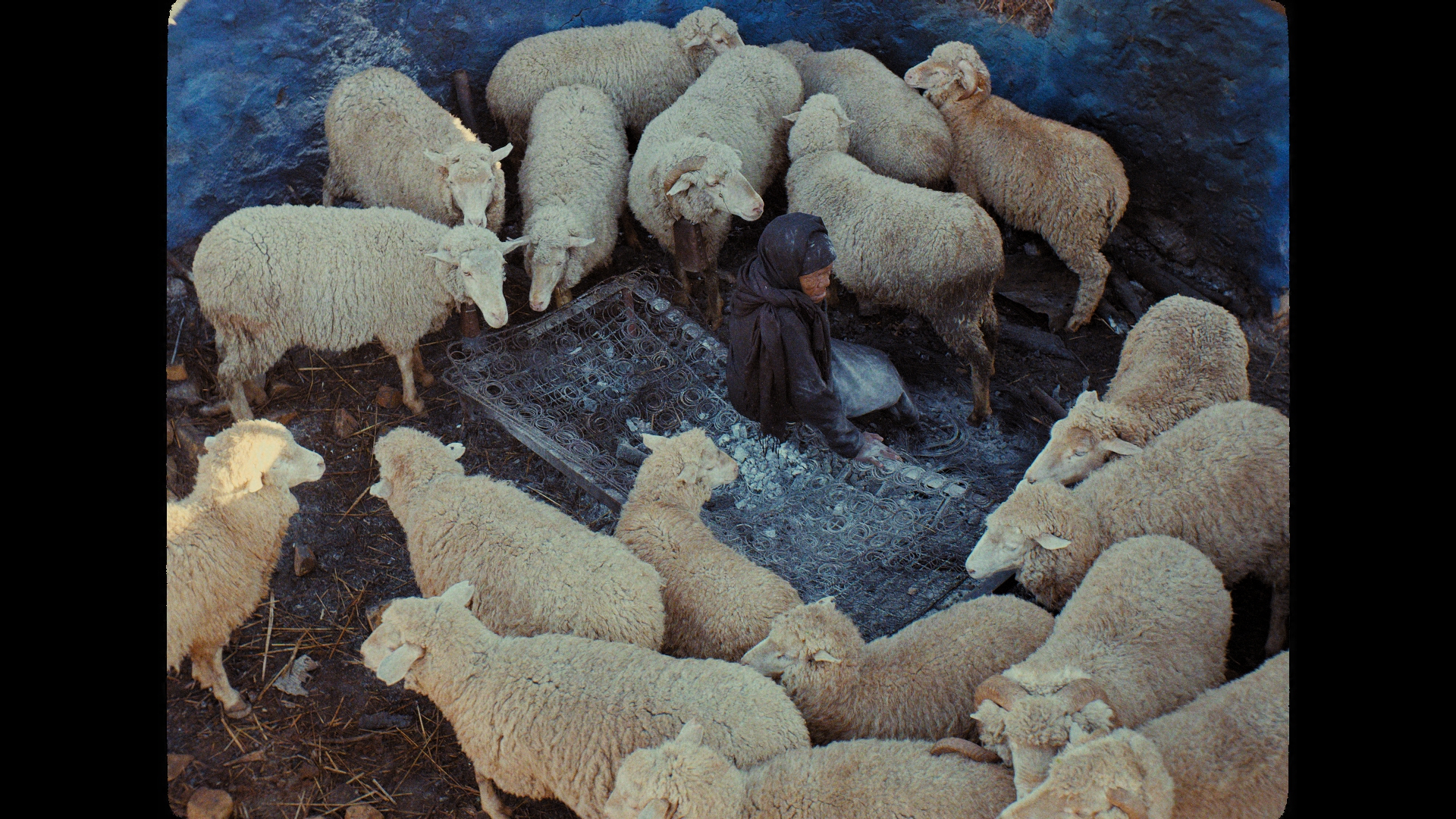
Image: Still from This Is Not a Burial, It’s a Resurrection (Courtesy of Urucu)
In it, Mantoa sits on the charred remains of her wire bed frame after her home has been burned down, presumably in an attempt to silence her protests. She is forlorn, desperate, alone, perfectly still. Everything she had, is lost. At its core, it is an image of heartbreaking hopelessness. As she sits, though, camera observing from a high angle, sheep suddenly start trooping in, bleating as they crowd around her, filling the frame for no apparent reason. It is so sweet, so gentle, so innocent. A faint suggestion of hope, perhaps. And yet utterly indefinable.
So indefinable, in fact, that Mosese himself says its meaning eludes him. “Every time I watch the film, I discover the deeper meaning of things,” he says. “But when I create them, I create from a very subconscious place. I don’t think, I don’t question why, and I don’t interrupt myself.”
I think this is what I love most about this film. Its mysteriousness. Not in the sense of suspense or the uncanny or the unknown, but in the way the sublime is always present. It is as if we are witness to something spiritual, something channelled from another dimension.
In this way, the film works its avant-garde magic to disrupt our expectations, subvert our way of looking, and alter how we see. It is a tool of transcendence, a means of connecting us with the source, returning us to the creative wellspring where we all begin. And where we all end. DM/ ML
Lemohang Jeremiah Mosese’s first feature was a German film entitled For Those Whose God Is Dead; his second, Mother, I Am Suffocating. This is My Last Film About You was a “documentary essay” that premiered at the Berlinale’s Forum section. This Is Not a Burial, It’s a Resurrection had its international premiere in 2019 as part of the Venice Biennale, and it was shown at Sundance in 2020, as part of the World Cinema Dramatic Competition – it won a Special Jury Award for Visionary Filmmaking. This year it became the first film ever put forward by Lesotho as an Oscar contender. It opens in South African cinemas on 21 May 2021.















 Become an Insider
Become an Insider
Comments - Please login in order to comment.